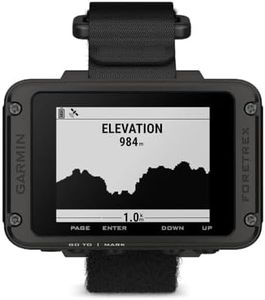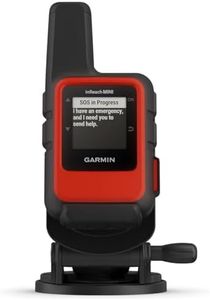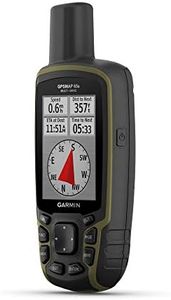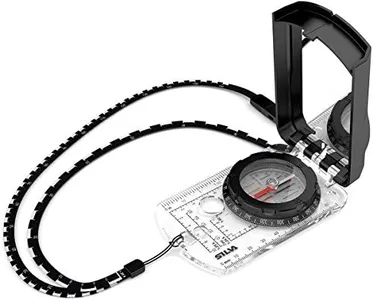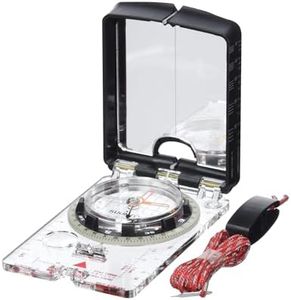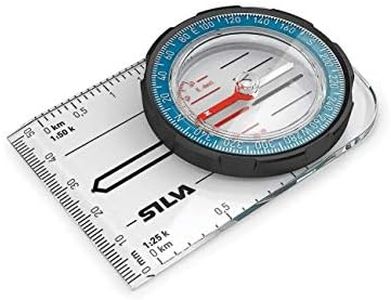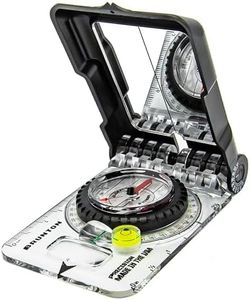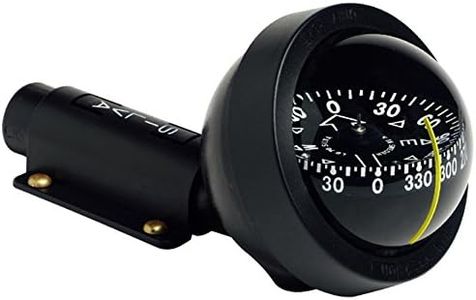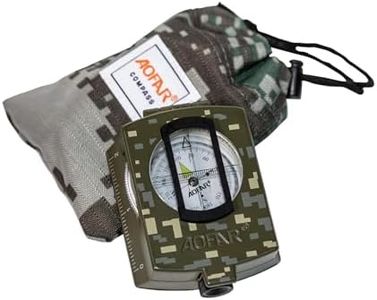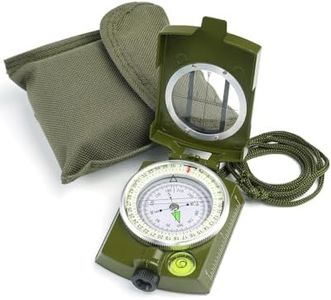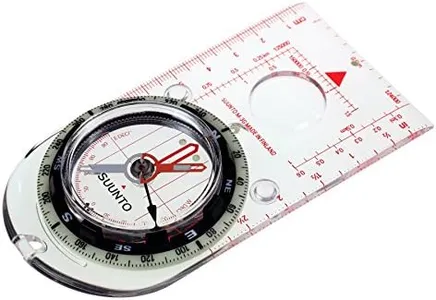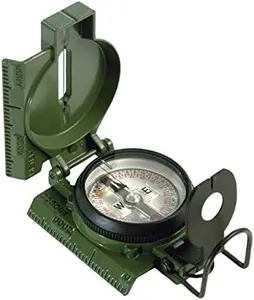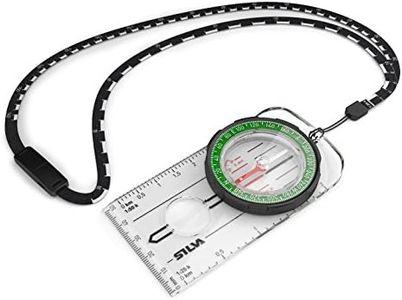We Use CookiesWe use cookies to enhance the security, performance,
functionality and for analytical and promotional activities. By continuing to browse this site you
are agreeing to our privacy policy
10 Best Compasses
From leading brands and best sellers available on the web.Buying Guide for the Best Compasses
Choosing the right compass is important if you want reliable navigation, whether you’re hiking, orienteering, traveling, or preparing for emergencies. While most compasses serve the basic purpose of indicating direction, some can help you with advanced navigation or make things easier in challenging conditions. Understanding the main features will help you select a compass that matches your level of experience and your intended use.Type of CompassThere are several types of compasses, including baseplate compasses, lensatic compasses, and digital compasses. The type of compass refers to its style and intended usage. Baseplate compasses are popular for map reading and outdoor activities, providing clear markings and a straight edge for mapping. Lensatic compasses, often used by the military, have a flip-up lens for precise sighting. Digital compasses are found in electronic devices and use sensors to show direction. If you need precision for orienteering or hiking, a baseplate or lensatic compass is ideal; for casual use or general direction, even a basic or digital compass can suffice.
Accuracy and SensitivityAccuracy refers to how reliably the compass points to magnetic north, and sensitivity is how quickly and smoothly the needle settles to show the direction. Higher-quality compasses offer improved accuracy and are less likely to give false readings due to nearby metal or magnetic sources. For navigational tasks where precision matters, such as in remote or challenging terrain, opt for a compass with higher accuracy and sensitivity. For casual orientation, standard sensitivity will generally suffice.
Declination AdjustmentDeclination adjustment is a feature that allows you to compensate for the difference between magnetic north and true north. This is crucial if you are using maps for navigation, as maps are usually oriented to true north. Some compasses have an adjustable feature, allowing you to set the declination for your current location. If you frequently use maps or travel to different regions, a compass with easy declination adjustment is a practical choice. For simple direction-finding, this feature is less critical.
Durability and Build QualityThis refers to how rugged and well-constructed the compass is—factors like being waterproof, shock-resistant, and made from sturdy materials. A durable compass will serve you well in harsh outdoor conditions or if you’re prone to dropping your gear. If you plan to use the compass in tough environments or rely on it for safety, prioritize sturdy, weatherproof construction. For indoor or casual outdoor use, less robust models may be sufficient.
Readability and Scale MarkingsThis relates to how easy it is to read the compass dial and use the markings, such as degree intervals, orienting lines, and rulers for map work. Clear, large markings make it easier to take quick and accurate bearings, especially in low light or stressful situations. If you expect to use your compass for detailed navigation or in poor visibility, a model with bold, luminous, and easy-to-read markings will be especially helpful. Simpler compasses may not have these features but will suffice for basic directional use.
Extra FeaturesSome compasses include additional features like sighting mirrors, clinometers (to measure slope), magnifying lenses, or integrated whistles. These add-ons can be helpful for specific activities such as mountaineering, rescue situations, or reading fine map details. Consider what activities you expect to do; if you need multi-functionality in a survival kit or you regularly use advanced navigation techniques, seek out models with these extras. For everyday use, basic compasses without extras keep things simple and lightweight.
